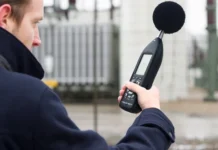Hyperbaric Oxygen Therapy (HBO), which was once known as the saving grace for deep-sea divers used for treating the change of pressure underwater, is now utilized by many for many health reasons.
In this excerpt below, we will discuss Hyperbaric Oxygen Therapy, why it is becoming quite the subject in the medical world, and how it can help you. However, if you want to know about it from an expert, visit www.oxygenark.com
From health problems to healing wounds, HBOT has got it all covered. Yes, you need to speak to a health professional and get a full body checkup before opting for Hyperbaric Oxygen Treatment. However, there is no harm in understanding the concept and considering it as a form of treatment.
Hyperbaric Oxygen Therapy
Hyperbaric Oxygen Therapy is when your body receives more than normal oxygen inside a pressurized environment. The HBO environment is usually a compressed room or chamber where the patient spends approximately one to two hours.
The normal oxygen count in a room is 21%. It depletes as you walk outside because of the environment’s depleting air quality. However, this chamber is made of purely 100% of oxygen, which allows the lungs to collect as much oxygen as possible. As a result, your tissues receive more oxygen allowing ailments to heal.
Ailments which Hyperbaric Oxygen Therapy Treats
Approved by the FDA, here are some of the common health issues one can use Hyperbaric Oxygen Therapy.
- Infection of bone and skin.
- Burns (even post-treatment for severe burns).
- Anemia.
- Radiation injury.
- Carbon monoxide poisoning. For immediate transfer of oxygen in the lungs.
- Gas and air bubbles in the blood vessels.
- The risk of tissue death due to a heavy injury can also be treated with HBOT.
- The vision loss is due to a sudden block of oxygen in the blood vessel.
- Wounds take a high time to heal, especially for diabetic patients.
Ailments Not Treated With Hyperbaric Oxygen Therapy
Before you get into the world of HBOT with your hopes high, remember that any medical experiment or the FDA does not acknowledge certain Hyperbaric Oxygen Treatment claims. These include:
- Any form of cancer treatment.
- Alziermers treatment.
- Autism Spectrum Treatment.
- Lyme disease.
- Depression.
- Anti-aging.
Remember that these are either autoimmune diseases or caused due to neurological degeneration during birth or hereditary. Simply providing 100% pure oxygen to the blood vessel might not be able to cure the disease.
On the other hand, depression and anxiety are a state of mind and not physical ailments. Yes, there are physical symptoms upon triggering these mental diseases, but the mental disease can only be treated properly with psychotherapies like CBT.
Anti-aging is how nature works, and yes, there are invasive surgeries that can treat the early signs, but no oxygen therapy could overtly alter anti-aging.
However, there are certain pain-causing symptoms of malign diseases which can be prevented with the help of this therapy.
What Are The Different Kinds Of Hyperbaric Oxygen Treatment
The FDA approves every oxygen provided to these forms of treatment therapy. We have already mentioned that a person can remain inside the cell for more than an hour. These are three types of HBOT treatment that you can consider.
One is the Hyperbaric Oxygen Treatment, an HBOT room that can hold more than one person.
Two is the Hyperbaric Oxygen Treatment capsule which can fit one individual at a time. One can rest inside these chambers for more than an hour. This is what is commonly used in treating the FDA-approved ailments given above.
Lastly, we also have the option of an HBOT zippered bag. However, portable, this bag has a specific purpose: to reduce altitude sickness in higher altitude regions (because of the oxygen thinning with altitudes).
Risks Involved In HBOT Treatment
Three are a few risks that you need to assess before giving Hyperbaric Oxygen a try.
- Due to the high pressure of oxygen, you might feel a difference in your regular pressure often experienced in a natural environment. This can cause ear pain and sinuses, which are prone to it.
- Temporary vision changes due to the same reason.
- Claustrophobia is a fear of closed spaces. This is a well-known approved phobia in the mental health sphere. Someone with severe claustrophobia might have difficulties staying inside the chamber for more than ten minutes.
5 Effective Ways To Avoid The Complications Of Hyperbaric Oxygen Therapy
Hyperbaric oxygen therapy is considered safe, but there can be potential complications like any medical procedure. Here are five effective ways to help minimize the risk of complications during HBOT:
Proper Patient Screening
Thoroughly evaluate and screen patients before initiating HBOT to identify any pre-existing conditions or factors that may increase the risk of complications. This includes assessing for conditions such as untreated pneumothorax (collapsed lung), certain types of lung disease, or a history of ear surgeries that may contraindicate HBOT.
Qualified Healthcare Professionals
Ensure that HBOT is administered by trained and experienced healthcare professionals who are knowledgeable about the therapy and its potential complications. They should closely monitor patients during each session to promptly detect adverse reactions.
Adequate Patient Education
Educate patients about the procedure’s benefits and potential risks or complications. Provide clear instructions on proper techniques for equalizing pressure in the ears to minimize the risk of barotrauma, which is a common complication associated with HBOT.
Follow Recommended Treatment Protocols
Adhere to established treatment protocols and guidelines for HBOT. These protocols outline the recommended pressure levels, treatment duration, and frequency of sessions. Deviating from these guidelines may increase the risk of complications.
Regular Equipment Maintenance
Maintain HBOT chambers and equipment in good working condition. Regularly inspect and service the equipment to ensure proper functioning and prevent malfunctions or safety issues.
Our Thoughts
Hyperbaric oxygen therapy (HBOT) is a medical treatment that involves breathing pure oxygen HBOT shows promise in certain conditions, such as carbon monoxide poisoning, non-healing wounds, and radiation injuries. Its effectiveness in other areas, like brain injury or hair loss, must be well-established.
It’s crucial to consult with medical professionals specializing in the specific condition being treated to determine the most appropriate and evidence-based approach.
Patient selection, proper screening, and adherence to treatment protocols are essential in minimizing the risk of complications during HBOT. Qualified healthcare professionals should administer and monitor the therapy, while patients should receive adequate education on the procedure and its potential risks.
Maintenance of HBOT equipment and following recommended safety guidelines are crucial to ensure the safety and effectiveness of the treatment. Regular inspections and maintenance of the chambers and equipment help prevent malfunctions or safety issues.
In conclusion, HBOT is a specialized medical treatment that can provide benefits in certain conditions. However, its efficacy may vary depending on the specific situation, and more research is needed to establish its effectiveness in various areas. It’s important to approach HBOT properly, consult medical professionals, and adhere to safety protocols to ensure optimal outcomes and minimize potential risks.
Read Also: 3 Ways Healthcare Professionals Can Improve Their Data Security


































































